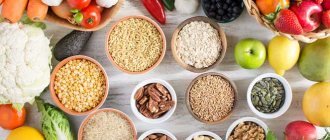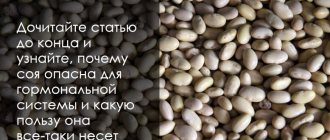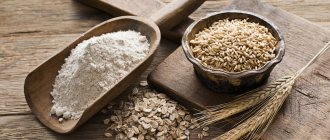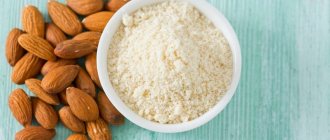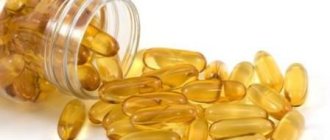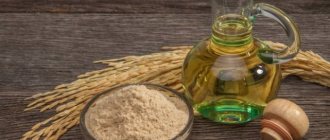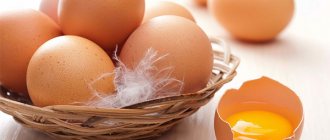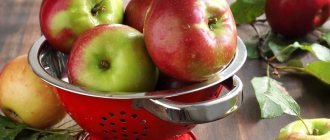Hello, dear readers of this blog! Do you know the name of the substance that everyone needs for slimness and health, good intestinal function, and excellent well-being? The correct answer is fiber! In fact, fiber is the most important part of any diet,
excellent gastrointestinal function, your energy and active metabolism! Its deficiency is very dangerous and can contribute to constipation, clogging of the body and other serious problems.
How to get enough fiber? How is it useful for the body and what is the daily dose? Where can I even get it?! You will receive accurate answers to these and other important questions from this article of mine.
What is fiber?
So, fiber (dietary fiber) is a type of complex carbohydrate. But in simple terms - ordinary plant fibers, the coarsest parts of plants. As an example, I can name cabbage leaves, grains in the shell, the top layer of beans and seed skins. All these are fibers that form naturally. But there is also a similar food additive. And this is already a very complex carbohydrate and a substance that is not broken down in the gastrointestinal tract.
What does fiber matter?
The main function is to help food be better digested and leave the body’s digestive system in a timely manner. In addition, fiber allows the body to cleanse itself naturally.
Any rough plant food is dietary fiber, and it is indispensable for human health. Adequate fiber intake is especially important for those who have intestinal problems.
What is dietary fiber
All plant foods contain two types of nutrients. Some are broken down in the gastrointestinal tract and provide the body with energy. Other components are non-recyclable. This means that we do not have the necessary enzymes to digest them, and they practically do not participate in energy exchange. But the human body knows how to benefit even from those components of food that it cannot process. In nature, there is a huge variety of these substances, united by mechanisms of beneficial effects. Their common name is dietary fiber, or cellulose.
What types of fiber are there?
There are only 4 of them - cellulose, lignin, hemicellulose and pectin. Here are the types of fiber with descriptions:
- Cellulose is found in bran, bean skins, cabbage leaves and broccoli, Brussels sprouts. It is also found in the peels of apples and pears, peppers, and cucumbers. Indispensable for intestinal function!
- Lignin is found in eggplants, peas, radishes, and various grains. Interestingly, there is more of it in stale fruits than in fresh ones. Thanks to its viscosity, it prevents harmful substances from being absorbed, reduces cholesterol levels in the blood and helps digested residues leave the intestines faster.
- Hemicellulose is found in beets, Brussels sprouts, grains and bran. It absorbs liquid, thereby helping the intestines work. Prevents colitis, constipation, hemorrhoids and even colon cancer.
- Pectin is found in many berries, oats, legumes, apples, and citrus fruits. It controls digestion in the stomach and small intestine, also prevents the absorption of harmful substances, and slows down the absorption of glucose (therefore, it is indispensable for patients with diabetes).
Dietary fibers are also soluble and insoluble. For example, soluble fiber inside a person becomes viscous and jelly-like. It cleanses by gently absorbing toxic substances and harmful breakdown products, as well as dispensing nutrients from the intestines into the bloodstream.
Soluble fiber is found in the pulp of the fruit. Most of it is in citrus fruits, legumes, grains (buckwheat, wheat, chia seeds, oats), nuts, vegetables, berries.
At the same time, insoluble - it swells like a sponge and completely fills the intestinal lumen.
Scientists have found that fiber can absorb liquid 4-6 times its own volume
Such fiber, moving through the intestines like a whisk, actively removes harmful waste products from its walls. It is found in the peels of fruits and vegetables, in the shells of grains and legumes, and in dried fruits.
Myth one: fiber is useless for the body
This belief has caused the emergence and flourishing of many pathological health conditions. Although fiber does not really contain nutrients, underestimating it is a big mistake.
Fiber reduces hunger
When entering the stomach, fiber absorbs water and gastric juice. When it swells, it increases in volume. The resulting bolus of food presses on the walls of the stomach and intestines, and a signal of saturation is sent to the brain. The feeling of hunger is replaced by a feeling of satiety. An important condition for starting this mechanism is a sufficient amount of water in the body. Therefore, no later than half an hour before meals, it is recommended to drink a glass of water or herbal tea.
Fiber slows down the absorption of carbohydrates and fats
Being in sufficient quantities in the intestines, fiber absorbs excess fats and simple carbohydrates. This helps to slow down the absorption and reduce the overall calorie content of the food eaten the day before.
Fiber dissolves and removes toxic substances from the body
This applies to the greatest extent to soluble dietary fiber, which includes pectin, gums, and polysaccharides.
Fiber has antioxidant properties
Dietary fiber prevents the aggressive effects of toxins on the body's cells.
Fiber helps improve insulin sensitivity.
Eating fast carbohydrates causes a sharp increase in blood sugar levels and a corresponding release of insulin. After glucose is utilized, its excess is transported to fat deposits. Intensive insulin production contributes to the development of insulin resistance - a decrease in the body's sensitivity to insulin. This means that over time, the body requires increasingly large doses of insulin, and the volume of fat deposits increases.
By reducing insulin resistance, fiber allows the body to achieve the same results with lower doses of insulin. In this case, fat deposits will accumulate much more slowly.
Fiber helps cleanse the intestines
Since fiber is not absorbed by the body, it passes through the intestines in transit, at the same time “sweeping out” what is unnecessary.
If you have consumed something that is not very healthy and want it to be absorbed minimally, eat more fiber.
Fiber regulates intestinal microflora.
Fiber is food for “good” intestinal microbes, so its consumption prevents the appearance of dysbiosis. Also, an adequate ratio of proteins and fiber in food improves the process of breakdown and absorption of proteins. This, in turn, helps restore and maintain the balance of intestinal microflora.
Dietary fiber feeds the “beneficial” bacteria of the gastrointestinal tract. Therefore, it is incorrect to talk about the absorption of fiber - it just undergoes fermentation.
| Food | Dietary fiber content (g/100 g) |
| Prunes, almonds | 15–16 |
| Dried apricots | 13,7 |
| Dark chocolate (70% cocoa) | 12,6 |
| Cooked artichoke | 9,4 |
| Boiled red beans, boiled chickpeas, peanuts, red currants, boiled white beans | 8–9 |
| Boiled lentils, dried dates, hazelnuts, black currants, wholemeal bread | 7–8 |
| Raspberries, raisins, boiled beans, chestnuts, parsley, boiled green peas, blackberries, walnuts | 6–7 |
| Jerusalem artichoke, raw celery root | 5 |
| Cooked: yams, spinach, green beans Raw: dandelion, fennel Rye bread, baguette | 3–5 |
| Cooked: yams, spinach, green beans Raw: dandelion, fennel Rye bread, baguette | 3–5 |
| Cooked: cabbage, broccoli, leeks, cauliflower, turnips, eggplant, pumpkin | 2–3 |
This table clearly shows which foods are high in fiber. All plant foods consist of soluble and insoluble dietary fiber in varying proportions.
The benefits of fiber
The benefits of dietary fiber are enormous and include the following:
- fiber enhances intestinal peristalsis, promotes its consistent wave-like contraction for the movement of food mass inside;
- prevents food from rotting in the intestines
- promotes healing of its mucous membrane;
- needed for cleansing - as it removes harmful substances due to their absorption (absorption) by dietary fiber;
- minimizes blood glucose levels;
- is an excellent prevention of cardiovascular diseases;
- helps process food faster;
- stabilizes metabolic processes;
- activates metabolism;
- indispensable for weight loss, since food, being digested more slowly, gives a long-lasting feeling of fullness
- prevents overeating, swells quickly in the stomach, creating a feeling of fullness
- nourishes beneficial intestinal microflora;
- has a valuable laxative effect, protecting against constipation;
- its sufficient consumption leads to strengthening the immune system, improving the condition of hair, skin and nails (this function is especially valued by women), and even improving mood!
Fiber is good for the body. There are two types of fiber: soluble and insoluble
Soluble fiber is resin, pectin, hemicellulose. Its sources are various seaweeds, oranges, apples, barley and oats, fruits, and legumes.
It takes a long time for the body to digest such fiber, which makes the feeling of fullness felt over a long period of time. Soluble fiber also slows down the absorption of sugar from the blood. This helps lower cholesterol levels.
Insoluble fiber consists of cellulose and lignin. This fiber is stored in grain plants, vegetables and fruits.
This fiber speeds up the passage of food through the intestinal tract and absorbs liquid along the way. Thus, insoluble fiber is indispensable for the prevention and prevention of constipation.
Benefits of fiber:
- Provides quick satiety without extra calories
- Reduces cholesterol and blood sugar
- Cleanses the body of toxic products.
- Fiber lowers blood cholesterol and prevents the formation of gallstones.
- Eating fiber helps prevent colon and rectal cancer and cardiovascular diseases.
- Products containing large amounts of fiber contain many useful microelements that our body needs.
- Fiber significantly slows down the process of absorption of fats and carbohydrates, which in turn has a positive effect not only on scale readings, but also on blood sugar levels.
- Scientists report that one and a half cups of oat bran per day reduces the amount of harmful substances in the body.
- It is also worth noting that fiber is the main “food” for many beneficial bacteria living in our intestines. Receiving nutrients from it, they produce enzymes and B vitamins.
Amazing properties of fiber and its benefits
Myriads of living beings
Have you ever wondered what the beneficial intestinal microflora is that needs to be fed? In fact, there are about 50 trillion mouths of microorganisms, mostly 30-40 species of bacteria. If we compare it with the population of the earth, then their number is 6 thousand times greater!
The growth and development of these necessary bacteria inhibits the growth of harmful microorganisms and fungi in the intestines. But for this they need food.
So, fiber is a nutrient medium for this huge number of bacteria that we really need.
Mobile sanitation station
As a result of research, it was found that fiber promotes the speedy passage of food through the intestines. For example, with sufficient availability of plant fibers, food masses leave the digestive system in 1-1.5 days.
Whereas with a lack of fiber, this time can stretch from 3 to 5 days.
Well, now imagine how on a hot day you left Olivier for 5 days without a refrigerator. What will happen to it and what will it smell like? But in our body the temperature is higher - 36.6 degrees. What will happen to the remnants of varied and mixed food in the intestines, like Olivier salad, after 5 days?
In reality, it will begin to rot and poison a person from the inside. And as you know, rotting products are toxic, carcinogenic and can cause internal infection.
But life-saving fiber comes to the rescue, playing the role of a nurse, quickly cleansing our intestines of food masses.
Conditional contraindications
Of course, like any other product, fibers can cause harm. There are no contraindications for use as such - absolutely everyone needs them! But, for example, people with ulcers, gastritis, and other gastrointestinal ailments should be more careful with them. Excessive consumption of fiber can lead to stomach pain, bloating, constipation, polyps in the intestines and even obstruction!
By the way, exactly this kind of trouble happened to one of my friends. He became interested in healthy eating. And I immediately bought myself fiber in powder form. I started taking it actively, every day. But I washed it down with a minimum of water, and generally drank little during the day. As a result, instead of benefit, the friend received stomach pain and indigestion.
Later, a doctor he knew explained his mistake, and now he eats correctly and knows how to handle dietary fiber correctly!
The benefits and harms of fiber
Fiber (or dietary fiber) is a substance found in all plant foods. It is necessary for everyone who wants to have a healthy and young body, a toned figure. What are the valuable properties of fiber?
Benefit
Fiber is used in many weight loss programs. This substance can suppress the feeling of hunger, cleanse the intestines of poisons and undigested food residues, and reduce the calorie content of dishes. Those losing weight should consume up to 60 g of fiber per day. Approximately 70% of the dishes on the daily menu should be prepared from foods rich in dietary fiber. It is necessary to eat vegetables and cereals for breakfast, lunch and dinner.
Fiber is not only found in vegetables and fruits. The diet should include nuts, grains, seeds, and legumes. At the same time, you need to combine these products with protein foods so that the fiber is better absorbed. However, fruits should be consumed separately from main meals. Since some dietary fiber is destroyed after cooking, most plant foods should be eaten raw.
You can also lose weight with the help of pharmaceutical fiber. Before purchasing such a product, you should definitely consult your doctor. The pharmaceutical preparation can be poured into any dishes, for example, yoghurt, kefir, salads. It is acceptable to take it in its natural form with water. The weight loss effect will be much greater if you increase your consumption of unsweetened liquid during the fiber diet.
Fiber also has other properties that are most valuable for all organs and systems. Its benefits are as follows.
- Fiber helps prevent diabetes, as it has the ability to significantly lower blood sugar levels. If this disease is already present, eating foods rich in fiber can help maintain the body in a normal state. It is only important to consult with your doctor to determine the optimal amount of dietary fiber per day for yourself.
- Thanks to the ability of fiber to cleanse the intestines of poisons and undigested food residues, you can gradually improve the functioning of this organ, get rid of problems with stool, normalize microflora, and safely but very effectively reduce weight, which will not return for a long time. In addition, eating a plant-based diet prevents the development of colon cancer and other intestinal diseases.
- Eating foods rich in dietary fiber can reduce the level of bad cholesterol in the blood, therefore normalizing the activity of the heart and blood vessels and preventing diseases of these organs. According to statistics, people whose diet is rich in fiber have 62% lower cholesterol levels than those who refuse such foods.
- Fiber is extremely useful for atony and dyskinesia of the intestines, gallbladder and bile stagnation.
- Experts have found that regular consumption of foods rich in dietary fiber removes toxic salts of heavy metals (mercury, lead, cadmium).
There are several types of fiber, each of which is necessary for the body. Polysaccharides (or cellulose) are found in wheat bran, young legumes, broccoli, apples, and cucumber peel. Hemicellulose is a component of cereals. Gums are present in oatmeal. There is a lot of pectin in apples, carrots, potatoes, victoria, and oranges.
Fiber is successfully used in cooking. It is added to flour when baking, to cutlet masses made from minced fish and meat, cottage cheese desserts, and casseroles. This allows you to enrich your daily diet with dietary fiber.
Fiber is also used in folk medicine. Masks, peelings, and skin softening products are prepared on its basis. With the help of fiber, you can effectively cleanse your face and return it to a healthy, natural tone. A bath with added fiber is very pleasant and healthy. After this procedure, you do not need to dry your body with a towel: the skin will remain soft and more elastic. Fiber is also good for hair. It is necessary to wash or rinse your hair with water with the addition of this substance in order to improve the structure of the hair shaft and nourish the hair follicles with valuable elements.
Harm
At the beginning of a diet on fiber-rich foods, gas formation may increase, stomach pain, and constipation may occur. In pregnant women, these symptoms are especially severe, so while you are expecting a baby, fiber should be limited in your diet. You should not introduce a large number of foods that contain a lot of fiber into the menu of young children. This can also cause constipation.
Similar problems often appear when taking pharmaceutical fiber. Before using such a remedy, you should consult a doctor who will select the required type of dietary fiber and help prevent unpleasant side effects. Otherwise, severe pain in the temples and back of the head, as well as allergic reactions, may occur.
Many types of fiber impair the absorption of some vitamins, macro- and microelements. When taking zinc and iron supplements, you should avoid eating wheat bran, and when taking beta-carotene, avoid pectin.
Contraindications
If you have the following ailments, you should stop taking pharmaceutical dietary fiber and also limit your consumption of foods rich in fiber:
- hepatitis, liver cirrhosis;
- ulcers;
- colitis;
- gastritis during exacerbation;
- constipation;
- individual intolerance.
Storage
Pharmaceutical fiber can be stored at room temperature, observing the expiration date indicated on the package. If you consume fiber in the form of bran, cereals or seeds, you need to keep them in tightly screwed containers in a dry place with a constant temperature. It is important that the fiber is not exposed to direct sunlight: in this case, some of its beneficial properties will be lost.
How to choose
Fiber can be soluble or insoluble. It is better to choose the first type: soluble fiber lowers cholesterol and normalizes blood sugar levels. In addition, it suppresses the feeling of hunger. It can be purchased both in the form of a pharmaceutical preparation and in its natural form: flax seeds, oats, barley.
Unlike soluble fiber, insoluble fiber slows down the absorption of some minerals and vitamins. It also cleanses the intestines more roughly than soluble.
When choosing fiber, you should not focus on price. An expensive product will not differ in its properties from a cheaper one. You need to pay attention to the color and aroma of the fibers. Normally, they should be gray-brown in color and odorless. It is important that the product is free of mold.
On sale you can find fiber in the form of tablets and sticks with different flavors. However, it is better to avoid such additives: they will only cause harm to the body. The most beneficial fiber should not contain any impurities, dyes or flavors.
What goes with it?
Fiber goes well with any food. During breakfast, it can be added to natural yogurt, porridge or juice. At lunch, fiber should be added to soup or meat dish. The benefits of dinner will increase if you drink jelly or kefir with added fiber before bed.
To keep your body's digestive system in working order, you need to include more plant foods in your menu. Fresh fruits, vegetables, and cereals should be on the table at least three times a day. If you can’t diversify your diet, you need to add a pharmaceutical drug to your food, having previously agreed on its choice with a specialist.
prodgid.ru>
Important rules for everyone and the norm
Absolutely everyone who plans to actively use fiber for health and benefit needs to remember 4 rules:
- Fiber should be introduced into the diet gradually, starting with small doses - if we are talking about an artificial supplement.
- Its use should be combined with sufficient volumes of water. The rule of 2 liters of water per day has not been canceled.
- To enhance the effect, physical activity is necessary, at least regular exercise in the morning.
- It is advisable to obtain dietary fiber from different types of foods.
By the way, we need an average of 30 grams of fiber per day. This is the norm. For example, this volume contains 300 grams of fruits or 400 grams of vegetables.
Fiber in products
In what and how much
Below I will tell you how much fiber products contain in 100 grams. Having this data, you can plan your diet, providing yourself with sufficient amounts of fiber.
Cereals, nuts: wheat bran 43.0 g / 100 g., rye bread 8.0 g / 100 g., Borodino bread 7.9 g / 100 g., grain bread 6.1 g / 100 g., nuts 4 .0 g / 100 g., buckwheat porridge 2.7 g / 100 g., pearl barley 2.5 g / 100 g., coarse oatmeal 1.9 g / 100 g., in regular wheat porridge - 1.7 g / 100 gr.
Fruits, legumes, vegetables, herbs, dried fruits: dried apricots 18.0 g / 100 g, raisins 9.6 g / 100 g, peas 5.0 g / 100 g, Brussels sprouts 4.2 g / 100 g. , beets 3.0 g / 100 g., carrots 2.4 g / 100 g., white cabbage 2.0 g / 100 g., citrus fruits 2.2 g / 100 g., any greens 2.0 g / 100 g. ., apples 1.8 g / 100 gr.
Knowing the amount of fiber in your food, you can easily create an optimal diet for yourself!
